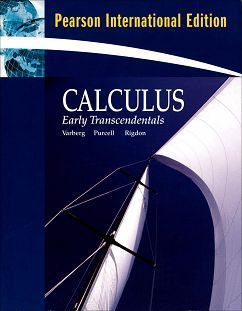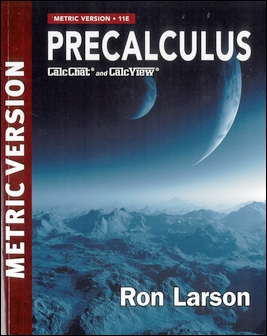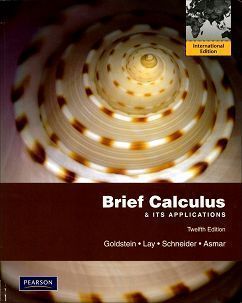書籍分類

Calculus Early Transcendentals
作者:Dale Varberg, Edwin Purcell, Steve Rigdon
原價:NT$ 1,200
ISBN:9780135051764
版次:1
年份:2008
出版商:Pearson Education
頁數/規格:888頁/平裝雙色
版次:1
年份:2008
出版商:Pearson Education
頁數/規格:888頁/平裝雙色
內容介紹 目錄 作者介紹
- Features
- Shorter book = smaller price tag — Costs students approximately .00 less than other mainstream calculus books.
- Perfectly paced — The economical presentation enables instructors to move through the book at a reasonable pace, covering one section per lecture easily.
- Rigor is emphasized, while also developing conceptual understanding — Helps students to devise a mental picture before getting a formal definition.
- Student development of “number sense” is encouraged — Emphasizes estimation as a technique to learn number sense, which helps students to catch their numerical mistakes by recognizing answers that don’t make sense.
- Moderate and reasonable integration of technology — Technology is carefully incorporated in exercises (and marked as such). Each chapter has 2 technology projects divided into 3 parts: (1) Preparation (think about the question before diving into technology) (2) Using Technology (3) Reflection (think a little deeper).
- Clear connections are drawn between algebra and geometry in the text and in figures— For example,geometric reasoning is used to understand a difficult concept in Figure 2 and Example on p.437 of the eighth edition.
-
Huge number of high quality exercises that have benefited from years of development:
* Makes creating varied assignments easy.
* Every section exercise set begins with a Concepts Review, ensuring students get the big picture before sharpening his/her skills. - Figures convey, not hide, mathematical ideas — Figures are intentionally drawn simply, to reflect a sketch a student might draw, unlike the overly elaborate figures in other books.
-
New Chapter Openers now appear throughout the book:
* Each chapter begins with a set of “Review and Preview Problems” that serve as a necessary review of previous material or a preview of things to come. - MyMathLab, the online course designed to accompany the text — Includes an online tutorial, assessment, text, videos, Student Solutions Manual, and access to Prentice Hall Tutor Center.
- Maple, Student Version Software — Is available for only .00 with purchase of a new text.
-
Numerical methods rearranged to the appropriate chapters:
* Newton’s method in “Applications of the Derivative”
* numerical integration in “The Definite Integral”
* Taylor polynomial approximation in “Infinite Series”
* Euler’s method in “Transcendental Functions” or “Techniques of Integration and Differential Equations.” - Single-chapter coverage of two- and three-dimensional vectors rather than in separate chapters.
- Streamlined material on conic sections — from five sections to three.
- New section on “Strategies for Integration” in the chapter on Techniques of Integration — Includes a summary of the methods of integration and a comparison of exact and numerical integration.
- New section on “Change of Variables in Multiple Integrals” in the chapter on Multiple Integration.
- New section on “Probability and Random Variables” in the chapter on Applications of the Integral.
New to This Edition







